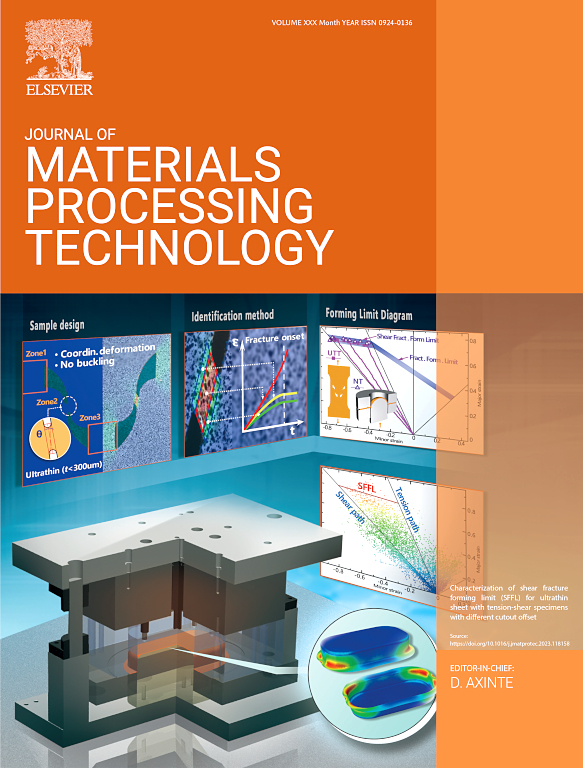用于高保真多材料DLP 3D打印的实时界面监控和主动聚焦
IF 6.7
2区 材料科学
Q1 ENGINEERING, INDUSTRIAL
Journal of Materials Processing Technology
Pub Date : 2025-04-03
DOI:10.1016/j.jmatprotec.2025.118834
引用次数: 0
摘要
自顶向下的数字光处理(DLP) 3D打印是一种很有前途的高分辨率和多材料制造方法。然而,在打印过程中,不受约束的树脂表面经常导致焦平面外的固化,从而导致制造精度的重大损失。为了解决这个散焦问题,我们提出了一种改进的自上而下的DLP 3D打印方法,可以实时校准树脂水平,确保每层都精确地打印在焦平面上。这种方法将固化平面和焦平面之间的偏差从数百微米减小到几微米,显著提高了打印分辨率和表面光洁度。此外,该方法允许在单个容器中制造具有渐变界面的多材料物体,从而提高不同材料之间的结合强度。此外,通过控制树脂水平,所提出的技术促进了材料在多个桶之间的切换,同时保持恒定的固化平面,从而能够创建高保真的多材料结构。这一创新战略通过为高分辨率和多材料制造提供快速、精确和通用的解决方案,推动了DLP 3D打印领域的发展。本文章由计算机程序翻译,如有差异,请以英文原文为准。
Real-time interface monitoring and active focusing for high-fidelity multi-material DLP 3D printing
Top-down digital light processing (DLP) 3D printing is a promising approach for high-resolution and multi-material fabrication. However, the unconstrained resin surface often leads to curing outside the focal plane during the printing process, resulting in significant losses in manufacturing accuracy. To address this defocusing issue, we propose an improved top-down DLP 3D printing method that enables real-time calibration of the resin level, ensuring each layer is printed precisely on the focal plane. This approach reduces the deviation between the curing plane and the focal plane from hundreds of microns to just a few microns, significantly enhancing printing resolution and surface finish. Additionally, the method allows for the fabrication of multi-material objects with gradual interfaces in a single vat, improving bonding strength between different materials. Moreover, by controlling the resin level, the proposed technique facilitates material switching between multiple vats while maintaining a constant curing plane, enabling the creation of high-fidelity multi-material structures. This innovative strategy advances the field of DLP 3D printing by offering a rapid, precise, and versatile solution for high-resolution and multi-material fabrication.
求助全文
通过发布文献求助,成功后即可免费获取论文全文。
去求助
来源期刊

Journal of Materials Processing Technology
工程技术-材料科学:综合
CiteScore
12.60
自引率
4.80%
发文量
403
审稿时长
29 days
期刊介绍:
The Journal of Materials Processing Technology covers the processing techniques used in manufacturing components from metals and other materials. The journal aims to publish full research papers of original, significant and rigorous work and so to contribute to increased production efficiency and improved component performance.
Areas of interest to the journal include:
• Casting, forming and machining
• Additive processing and joining technologies
• The evolution of material properties under the specific conditions met in manufacturing processes
• Surface engineering when it relates specifically to a manufacturing process
• Design and behavior of equipment and tools.
 求助内容:
求助内容: 应助结果提醒方式:
应助结果提醒方式:


